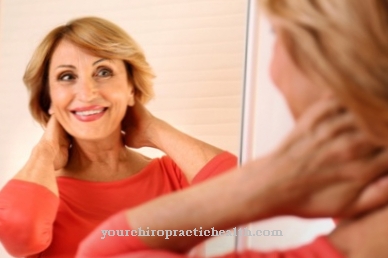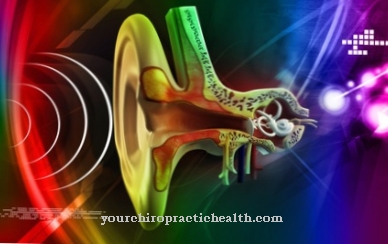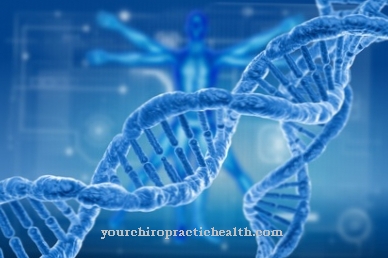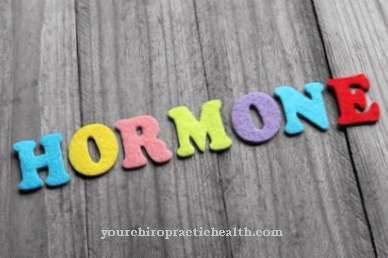Man does not have it exclusively under his feet and on his palms: that body hair. Around 5 million hairs are distributed over the human body and still look a little like the fur that protected animals and people from environmental influences. Body hair changes in the course of evolution and life of every individual.
What is the body hair?

Even in childhood, the entire body (except for the palms of the hands and inner surfaces of the feet) is provided with colorless, fine downy hair. Between the ages of 8 and 14, the hair on the body and in the genital area begins to get stronger. In the course of life, they become more intense step by step.
Hair grows first in the genital area. They form on the labia, on the inside of the thighs, around the penis, and on the scrotum. The thickness of the hair is predisposition and varies from person to person.
The beard begins to grow between the ages of 15 and 19. Usually, chest hair does not appear until the end of puberty, around the age of 17. However, it can also only begin at an advanced age (between around 20 and 30 years of age).
Not all men get chest hair or intense beard growth, and not all women do not get chest hair or beard growth. Here, too, genes play a crucial role.
Function & task
Body hair includes all of the hair on the body. Androgenic hair is influenced by the androgen release. Apart from the scalp hair and beard hair, the growth cycle of the body hair is limited to a few months and is therefore significantly shorter than that of the scalp hair.
Terminal or adult body hair begins to develop during puberty and is only present when androgens are increasingly released. Men and women tend to have different levels of androgen release, which means that the terminal hairiness of the body differs between men and women. Body hair is therefore a secondary gender characteristic.
Body hair protects people from UV radiation, parasites and pathogens. The terminal hair also supports temperature regulation. Under areas of the body that are rich in sweat glands, such as the armpits, the hair increases the surface area, which allows sweat to be easily removed.
In addition to increasing the surface area of the body, body hair also increases the sensitivity of the skin. The hair transmits contact to the skin early on and there is an increased effect there. In addition, the hair offers protection against blood-sucking ectoparasites, because the amplifying effect means that people feel parasites such as mosquitoes, bed bugs or ticks more quickly. Another advantage is that the bloodsuckers need significantly more time to find a suitable puncture site in the tangled hair. The thick hair also provides protection for the pubic area and reduces friction.
In the early days, man's ancestors still possessed a type of fur. This coat of hair has become thin and thin throughout history. Nevertheless, the warming function is still slightly retained. In addition, small muscles attach to the hair follicles. When these muscles contract, the hair straighten up. This straightening of the hair protects against the cold, since the contraction reduces the blood flow to the affected area and the straightened hair creates an insulating layer of air through which the body heat escapes more slowly.
The eyelashes, nose hair or ear hair protect the corresponding sensory organs from foreign bodies. Eyebrows protect the eyes from sweat that runs down the forehead.
You can find your medication here
➔ Medication for hair loss and baldnessIllnesses & ailments
Hypertrichosis is an increased growth of body hair. The phenomenon can occur in both sexes in different degrees and in different ages. In the male sex, hypertrichosis is recognized when there is very pronounced body hair on the stomach, back or neck. Women, on the other hand, have hair growth on the upper lip (mustache) or on the chin in this case. Sometimes women have a lot of hair on their forearms or in the buttock fold.
Hirsutism can only occur in women. The hair growth here corresponds to the male body hair. Those affected suffer from hair growth on the chin, upper lip, back, stomach or on the upper arms. The reason can be a hormonal irregularity. Most of the time, however, no underlying disease can be identified.
In some cases, hair growth is accompanied by some other typical male changes. This includes, for example, a deep voice and baldness. If these symptoms occur, it is referred to as virilization or masculinization.This is triggered by an increased formation of male sex hormones.
The idea of ideal hair growth varies from culture to culture. In western cultures, male hair is usually more accepted than hair by women.
With regard to a lot of body hair, the question arises to what extent hirsutism and hypertrichosis are to be assessed as diseases at all. The phenomena do not have any negative effects on the body, but ultimately only oppose the social ideas of what is considered normal on average.
Just as there are, in terms of hirsutism, men who have little body hair (which in turn is not classified as a disease), there are women who have a lot of body hair. This primarily has a negative effect on the psyche, as it contradicts the female ideal.
In general, the biological boundaries between men and women as opposite sexes are not as clear as we socially imagine. In the absence of other symptoms, “masculinization” can therefore be seen as a normal manifestation within the human gender scale.
However, if increased body hair occurs suddenly, a doctor should be urgently consulted. Because such increased body hair can indicate a tumor, an underactive thyroid or a hormonal underbalance.



























